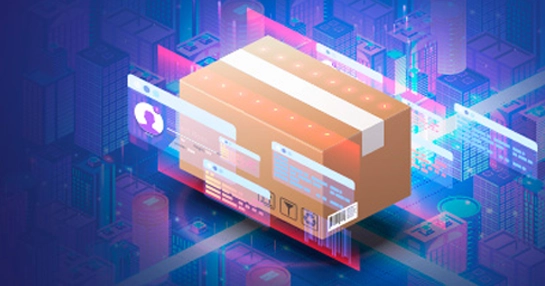As our "Covid Response Series" continues, Biju Mohan, VP & Rafiq Merchant, Senior Director discuss not just what companies can do, but how GEP has created a platform to connect suppliers of PPE to healthcare providers in greatest need.
Speaker:

Biju Mohan
Vice President
'

Rafiq Merchant
Senior Director

Paul Blake
Director
PAUL: This is GEP insights. I'm your host Paul Blake. Today we're continuing our series of COVID 19 response conversations about what companies should be doing in response to the impact of the pandemic. Today's episode is somewhat different because we're not going to be talking so much about what companies should be doing but actually about what we have been doing with me today to discuss a really quite exciting project. We have two senior members of the GEP team Biju Mohan, vice president of consulting and Rafiq Merchant senior director of consulting. Welcome to both.
BIJU: Thanks, so much for having me.
RAFIQ: Thank you, Paul.
PAUL: Let's start as always with introductions tell our listeners please about yourselves what you do a GEP and what your specific areas of interest.
BIJU: Thanks for having me here today. So my name is Biju Mohan. I'm a vice president the GEP I'm part of the delivery team and one of the leads for the life sciences practicing GEP. My focus is on supporting global organizations in the life sciences sector helping them in their procurement and supply chain needs including transformation strategic sourcing and ongoing category management. So this is a specific area which has impacted the life sciences sector a lot. So definitely looking forward to sharing my perspectives on how we are helping today and what we're doing.
PAUL: And Rafiq.
RAFIQ: Thanks Paul. My name is Rafiq Merchant. I'm a director here a GEP I've been with the organization for approximately seven years. My primary focus is around leading our overall procurement transformation engagements for many of our large accounts. And right now my focus is more within one of our telecom clients really helping them navigate not just sort of the current scenario that we're in right now but also just overall an opportunity to expedite their ability to deliver savings for the organization and ultimately drive bottom line benefit. So. A pleasure to be here and excited to talk about sort of some of the efforts that we have going on right now.
PAUL: OK. Thank you both very much. Now I'm not going to steal your thunder. I did intimate right at the beginning that we're going to be talking about what GEP are doing in response to this crisis. So what is that.
BIJU: Sure. Paul. So. So this was an initiative that came up based on some of our internal exposure but some of the hospitals and some of our many of our clients outside are facing especially in terms of these that these current crisis that many of them who are facing a lot of challenges and supplies of PPE protective equipment to ventilators other kinds of materials. On the other hand we also saw that there were a lot of suppliers and manufacturers out there who are betting to help but did not have a very good efficient mechanism to reach out and connect with the right provider. So this we thought would be a great opportunity for us to provide that mechanism. I let Rafiq continue and get more details.
RAFIQ: thanks Biju and just to echo some of what you mentioned Paul at its most basic form what we really wanted to do was, given the current environment, find a way to being able to connect our health professionals and medical professionals to PPE supply that's available in the marketplace given the significant uptick in demand for PPE equipment. We know that many of the hospitals both in our area and the New York New Jersey area but across the U.S. were having some trouble identifying PPE supply. And so essentially based on our subject matter expertise and sort of the resources that we had available, we wanted to find an efficient way to being able to identify some of those suppliers out in the marketplace and then supporting sort of the procurement organizations within various hospitals to being able to connect them with not only the supply but then providing any added support they might need as well.
Whether that’s identifying distribution mechanisms if there is a need. To help place the relevant orders and then ultimately. Getting that supply on their doorsteps so that frontline individuals ultimately utilize.
PAUL: Let me ask you what prompted this. We’re watching the news of course and we're aware of the PPE crisis within the larger crisis but when did this project start and how did it get started.
RAFIQ: What I'd say Paul on this front is I would I would identify two things one I'd say is just the overall leadership commitment at the organization. And then the second is more so the personal commitment from various of our individual employees that wanted to benefit the cause. What I can say is as sort of things were escalating in this arena and I want to say it was probably March 21st when we initially had a brainstorming session with our leadership team here at GEP to identify is there a way that GEP can help identify “Is there a way that we can support even our local markets and our local hospitals in a way to help them secure some of this PPE supply given what was going on.” And the originally started with focusing on three or four hospitals in the New York/New Jersey area where some of our leadership team had connections along with some of our employees as well to see what can we do immediately to start helping these organizations in these hospitals and sort of.
From there it expanded to a more of a larger effort where we were able to build sort of a centralized portal that is able to connect the supply with demand in sort of a real time fashion and ultimately help these providers. So I'd say that's where it kind of started and you feel free to add anything I may have missed.
BIJU: So just to add to that a little bit more context on that so many of us including Rafiq, myself and some of the other leaders are currently working with clients and we get those and we continue to speak to them.
Some of these stakeholders have families and friends in the sector in the healthcare sector who are at the forefront of this crisis. So hearing from them we had a firsthand knowledge of some of the challenges that they were facing. Some of the challenges that the hospitals were facing almost in around the same time are leadership who are also very passionate about supporting and giving back to the community had similar ideas and wanted to connect the dots to see how we can support this whole issue in a much more productive manner. Leveraging our strengths and our capabilities. So this whole thing started through a brainstorming session. We had on Saturday I think it was March 21st. On that day it was a small team, Rafiq, myself, Neha and Subash, Roopa among our co-founders and few people from the technology side who got together to see what can be done in a very short span of time in a very quick span of time which can help put together a solution that will connect the hospitals to the suppliers and manufacturers. So that was the genesis of this whole discussion.
PAUL: Yes absolutely. Now our listeners won't know this but we recording this less than three weeks from that initial discussion. At GEP of course we do pride ourselves on being able to be very flexible and move very fast. But even given that this project seems to be unprecedented in its speed to realization how many people are involved. What was the process. Tell us a bit about that.
BIJU: Sure. So let me let me start it off and Rafiq can obviously provide details. So a first step was obviously to think about a technology based solution to help this whole linkage between the hospitals and suppliers.
So what I mentioned earlier that it was a shock call on a Saturday then it was a multifunctional team that got together until the technology folks that needed the GOP leadership and a few of us who are more on the service side talk about how to solve this. So the first step was to come up with a very basic quick and easy to understand website which can be used as an entry point for hospitals for suppliers to provide details of what kind of products do they need. What kind of information do they need to provide to help them. And and who do they need to reach out. So that was the first discussion which was almost like a technical setup needed for the website. And this whole save was set up and ready to operate in a short span of two days. So we started on Saturday discuss the requirements my neighbor who had a prototype site ready to state was ready to go. So that's quick as that. The second part of it was to have a voluntary team who will be the backend for this Web site. This team will be responsible far reaching out to suppliers who are connected through the website who needed specific information. Who also in the arm needed help in in in putting the information together. That is that will be shared with hospitals or vice versa. So we had a voluntary team which included folks from India from the US office and from our Costa Rica office. So, and David Brock and David Dave provided their voluntary time and we had a quick call and then state does that set Becky. So in a short span of the entire week the team was ready. They were signed up. David onboard the website was ready. Phone numbers and email centers by the health help line set up and was all ready to go.
PAUL: Well that's terrific. Thank you. Rafiq took a little bit about how the COVID 19 health program actually works how to health care providers find suppliers. What is the process that the suppliers go through and also who's paying for this?
RAFIQ: Sure sure. Paul So what we wanted to try to do was make sure we kept the process as simple as possible for our health care professionals and medical professionals to be able to identify and connect with supply.
We know that they have many other priorities going on at the moment and this should just hopefully be a seamless process as seamless as make it to help identify identify suppliers for them so all medical providers or any suppliers who have supply available would need to do is go to our Web site which is www.gep.com/covid19help. And they will get access to the portal and Web site that Biju is just referencing. Once they get to that portal, they'll see that there's three sections that have been laid out on the portal. One is if they're able to provide supply or if they are a supplier. The second is a section where if they need supplies. So if they are a hospital or a medical professional or a health care organization they would simply click in that area and the third is if there is a manufacturer or a small business who has an interest in helping the cause. But right now would need support in repurposing their equipment or need some additional subject matter expertise.
So based on which the individual falls in they would simply go to that section of the website. Click on the link that's provided and they will be prompted to enter the relevant details so details would include.
- The supplies that they're able to provide if it is a supplier.
- The quantities that they can provide
- their specific contact information supplier information
- and then any type of certification that they have as well. FDA or otherwise which we can pass along to our medical professionals.
Similarly if it is a medical professional that's reaching out.They would simply go in and provide us the quantities of the different medical PPE equipment they need, whether that's masks, ventilators, sort of surgical masks any face shields or gloves, gowns, etc. They would provide the quantities they need and submit that to us along with their relevant details.
Once that information is provided on the website our help desk team that Biju mention would essentially connect those specific medical professionals with the relevant suppliers available so we will directly reach out to them via email or a potential phone call sharing the available supply that's out there in the marketplace along with those supplier names and essentially connect the two parties together. Now when it comes to the cost that you mentioned.
What GEP trying to do is provide a free pro bono service here of being able to connect the suppliers to relevant medical organizations or health care professionals. Once we've made that initial connection between the supplier and the medical professionals, we then let the medical professionals go ahead and take the process forward in terms of placing that order and the amount of quantity that they need.
Now as part of that process if there is any additional support that our hospitals or medical professionals require, they can simply reach out to us or our helpdesk team and ask for the additional support that's needed. So again, from a website perspective GEP is providing this as a free pro bono service. Once the supplier and the medical professionals are connected it is then upon the medical hospital organization to go ahead and order the supplies that they require.
BIJU: Just one more example of probably how a sort of a multiple sets of communication that happens is that we have also accounted for manufacturers out there who might be able to provide support either through repurposing their existing manufacturing lines to be able to manufacture PPE or are they might already have existing capacity to manufacture these requirements and be able to supply the hospitals. So we being able to provide that facility to in the bedside. Any specific manufacturers can log in and enter the details and then modify members can reach out and provide any help either of them that some of our experts on the manufacturing side who can help or guide them in the being focusing process or are better can get for the hospitals as Rafiq explained so that's another nuance that I just wanted to add.
PAUL: Thank you both very much indeed. This is an unusual situation whereby this is a project that we wish has a very short life indeed but given the hard reality that the crisis is unlikely to be over in the next couple of weeks, I'd like to ask you both how it's going. Just two and a half weeks into this project which is no time at all in the normal course of events are you seeing results already.
RAFIQ: Sure PAUL, So I think so far, we've been pleased in the sense that individuals and medical organizations are utilizing the platform. I would say over just a span of a few days we've had quite a few suppliers reach out to us to provide inputs into the medical PPE equipment that they have available.
These suppliers have spanned across the globe from suppliers in the US on the West Coast to the east coast but in addition suppliers in Abu Dhabi in Australia as well. In addition to that we've also had good our inbound requests from various medical organizations in hospitals as well utilizing the platform either asking for.
A few different types of PPE equipment or just being focused on one specific type. For example masks and we've been fortunate enough to being able to connect those various medical organizations with the relevant suppliers. So overall Paul I think what I would say is we're pleased that we're able to make an impact. We're pleased that medical professionals and suppliers are both utilizing the platform effectively and with hopes that we are able to connect one to the other.
In addition to that we've also had a couple of manufacturers reach out to us where they've started asking for some support and being able to repurpose some of their equipment seeing you know a couple of fabrication providers and suppliers that are out there that could potentially repurpose some of their existing equipment and our teams are working on providing them the relevant sort of subject matter knowledge of being able to connect them with others in the marketplace that can help. So overall I think we're pretty pleased and we're just grateful that we're able to make an impact.
PAUL: Well as somebody from GEP not directly involved in the delivery of this project I believe I speak for all of us in the company when I say how proud we are of what you've been able to do so far in such a short space of time and as I said I hope this project comes to an end very quickly but for however long runs I hope that he has every possible success. Now I want to ask you why GEP you're able to do this. What is it about our organization that makes it possible to deliver this kind of thing in such a short space of time.
BIJU: In my opinion. There are a couple of reasons which spring to my mind.
First is obviously we have an amazing balance of people both in the technology and service side who are milling to but in a very agile manner very rapid manner and put it come up with solutions and then implement it on a fast basis so that that's been our DNA to follow this figuring out how we can convert an idea into reality. And that's.
This is a great example of how that has been implemented here. So they explained that the website was set up conceptualised. In a day on a Saturday by Sunday a prototype was available by Monday a website a complete website was available for implementation. Similarly on the service side the team was informed ah we asked for volunteers on Monday. By Tuesday we had a full team available and ready to start and by Wednesday we had the whole fundamental process for the help line and how to take it forward. All agreed. So we had a full installation in a matter of three to four days. That was the first big area that we talked about. In the success of this program. The second one is obviously David's capabilities itself in terms of understanding this market both and they can Skype on the on the demand side as a lovely supply side. So we have an understanding of what kind of requirements come from hospitals. We had a good initial good strong understanding of the supply markets and potential suppliers as well as manufacturers who can supply so both these capabilities and our ability to implement quickly have been our success factor here.
PAUL: Let's now look forward to a time hopefully in the very near future when we're past the immediate crisis and organizations are looking at recovery and how to reorganize themselves to greater resilience and stability in the face of similar crises in the future. In your opinions what learnings can companies take from what is happening right now when they consider the supply chain post COVID 19.
BIJU: So I think the first and foremost the biggest learning here is that these kind of pandemics at least enough to 19 we've got to be more improbable if not impossible. And companies rarely take corrective action to make sure that they were in a position to respond to it. But obviously since January of this year as you can see this is very much a reality. Companies are being forced to consider this. And. Are Being. Looked upon to figure it out. Business continuity plans in these kind of situations.
So one one long term implication of this crisis if there is going to be a greater focus on risk management risk assessment companies will have to figure it out. Business continuity issues for situations which may not be very probable but can be can be very likely to happen. Beginning of this year as the pandemic indicated. Some.
Companies now will have to be more prepared for events that they considered improbable. But going forward actually potentially might happen very frequently. So they will have to have strategies in place. They will have to have. Backup options and from their supply perspective from the supply chain perspective manufacturing perspective which can help them better at this crisis that is one that packages that companies will need to account for or incorporate into their operational plans going forward. GEP is well positioned to support them in a very agile manner. As you can clearly see.
PAUL: Thank you. Rafiq. Let me ask you a similar question that for quite some time there has been a move in all businesses with supply chains to adjusting time type model with low inventory as little cash as possible tied up in stock in transit and in some cases. Mobile has collapsed completely recently. Do you think we're going to see a new model emerging with the restructuring of how supply chain should work with more focus on multiple supply lines more stock on hand and more reliance on local warehousing local distribution the known into a just in time supply chains.
RAFIQ: Sure yeah. And I think I think that's a great point. And I think something big you alluded to a little bit earlier as well where I do see of course with the sort of the pandemic that we saw in the current environment we're in.
I think we will see a better balance of that in terms of what is expected in terms of just in time delivery versus the amount of inventory held on hand versus having freed up cash flow. That being said I do think.
Companies are going to need to focus on having added supply agility.
What I mean by that is where historically organizations relied on maybe just one strategic supplier really working on expanding the relationship with with one potential provider out there having a lot of their eggs in that one basket. We will see a little bit of a shift moving to having sort of a dual supply base or a multi supply base supply chain for many of these organizations with the intent to diversify risk. Mitigate risk and making sure that if one area of supply chain goes down or one avenue of supply goes down that they do have contingency plans in place now in order to get it get there. It doesn't happen overnight. There would be there will be some growing pains doing so. This will require additional supplier qualifications additional testing additional onboarding of suppliers that are out there in the marketplace and that will require some legwork upfront. But I think. Coming out of this as we sort of start to normalize again I think companies will have an increased focus. On sort of having sort of this supply agility and having sort of these dual source models so that if a situation God forbid like this does happen again, they do have some more developed contingencies rather than being reliant on sort of one source that's out there in the market.
In addition to that Paul I think one other thing that companies will focus on or should focus on coming out of this environment that we're in is having a prioritized approach to having a structured cost advantage. What I mean by that is of course as organizations are trying to navigate through the current environment that we're in there are going to be immediate cost cutting initiatives finding ways to improve cash flow and ultimately. Find more cash on hand. But that being said I think as we move to normalcy organizations to start thinking about moving away from even potentially a source to pay model first to a budget to pay model what I mean by that is organizations having a linkage between procurement. And what finance. Really have a very good understanding of every requisitions that's flowing through their organization and having sort of proactive visibility into their spend patterns so that they're able to make an impact a point of requisition versus something that's been retroactive. And that'll just give organizations that added visibility to better forecast and be in a better position in a situation like this happen again. So I think those are definitely a couple of things that we'll see a trend once we start getting back to normalcy, post this current environment.
BIJU: A couple more trends that I see.One is that we will see greater adoption of newer technologies like 3D printing additive manufacturing et cetera being adopted by some of these companies who have been late too late to this game. Specifically, I can already see that there are a number of suppliers of PPE who are developing these manufacture and gave us capacity from a 3D perspective plutocratic perspective. Similarly we also see a lot of new technologies and innovation. You can see that happening already and new designs are being launched by companies universities for ventilators which allows it to be split among multiple patients at a time. And so that's definitely something that you can look forward to in the future. One more impact that I do see is that there will be a lot more agility in the LEAP times associated with regulatory clearances. There is already a lot of pressure on the FDA to to clear out a lot of designs which will enable making these products vaccines best gets available faster for the patients. So we do expect to see a lot of liberalization there. So these are my two cents.
PAUL: Well again thank you both very much. That was very interesting indeed.
BIJU: Thank you Paul.
RAFIQ: Thanks so much Paul.
PAUL: I think everyone will agree with me that we wish the COVID 19 help project the very greatest of successes connecting the suppliers of vital PPE to where it so urgently needed but also that this project becomes redundant very soon indeed.
Thank you for listening to this episode of GEP insights for intelligent procurement and supply conversation. I'm Paul Blake and I'll see you in the next episode.









